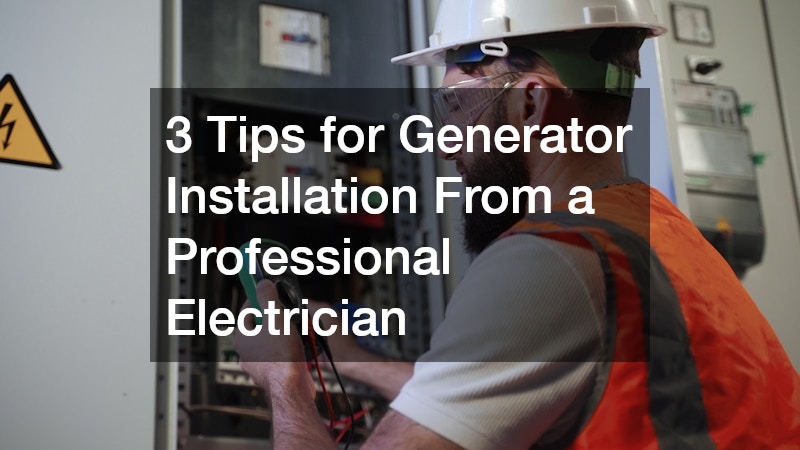
In today's world, the installation of a home generator is more important than ever, as power outages continue to be a common occurrence due to severe weather and aging infrastructure. A well-installed generator ensures that your home remains powered during these outages, maintaining your comfort and protecting your property. However, generator installation is not a simple DIY task; it demands the skill and precision of a professional electrician. This article will provide you with insights into generator installation, offering tips directly from experienced professionals in the field.
Video Source
By tapping into their expertise, you can make informed decisions that will keep your home running smoothly in times of need.
Choosing the right generator for your home is a critical first step in the installation process. Start by assessing your power needs to determine the necessary capacity of your generator. Consider which appliances and systems you need to keep running during an outage, such as refrigeration, heating, cooling, and essential lighting. This assessment will help guide your selection process, ensuring that you choose a generator with adequate power to meet your household's demands.
Beyond power capacity, consider the different types of generators available. Standby generators offer a permanent solution, automatically powering your home in the event of an outage, whereas portable generators provide a more flexible but manual option. Evaluate the pros and cons of each type, keeping in mind factors like convenience, installation complexity, and long-term cost. Many homeowners find that investing in a standby generator pays off in the long run due to its reliability and ease of use during emergencies.
Fuel source is another vital consideration. Common options include natural gas, propane, diesel, and gasoline, each with its advantages and disadvantages. Professional electricians recommend choosing a fuel source that aligns with your home's existing infrastructure and your personal preferences. Additionally, ensure the generator you choose is of a size that fits your allocated space and meets local zoning and installation requirements. Balancing these considerations will help you select a generator that is perfect for your home.
The installation process for a home generator can be broken down into several key steps, starting with site preparation. It's crucial to choose a location that complies with local building codes and provides adequate ventilation. Professional electricians often suggest installing the generator on a concrete pad or a sturdy platform to keep it secure and at the correct height. Once the site is prepared, your electrician will establish a secure connection to your home's electrical system, ensuring that all wiring is correctly routed and protected from moisture and physical damage.
Another critical step involves the integration of an automatic transfer switch (ATS), which seamlessly transfers power to the generator during an outage. The ATS is a difficult piece of equipment to install, and its complexity underscores the importance of hiring a professional. An improperly installed ATS can lead to electrical hazards and damage to your generator or home. This step must be performed with precision and expertise to ensure safe operation.
A professional electrician also conducts thorough safety checks throughout the installation process. They inspect all electrical connections, test the generator's functionality, and ensure that all components are installed correctly. This diligent attention to detail is essential, as it identifies potential issues before the generator becomes operational. Their comprehensive approach to installation not only enhances the safety of the system but also maximizes its efficiency and longevity.
Ensuring safety and compliance during generator installation is paramount. Professional electricians emphasize the importance of adhering to local codes and regulations, as non-compliance can result in fines and unsafe conditions. Before beginning the installation, familiarize yourself with the specific requirements in your area, and collaborate with a licensed electrician who is knowledgeable about these regulations. Their expertise will help you navigate permits, zoning laws, and any other legal considerations.
A critical aspect of safety is proper ventilation. A generator produces exhaust gases that can be hazardous if not vented appropriately. Positioning the generator a safe distance from windows, doors, and vents is essential to prevent carbon monoxide buildup in your home. Your professional electrician will ensure that the generator's exhaust system is installed correctly and that adequate measures are taken to prevent potential hazards.
Regular maintenance inspections and operational testing contribute significantly to the safety and longevity of the generator system. A professional electrician can establish a maintenance schedule, ensuring that components are checked and serviced periodically. They can also provide training on safe operation and emergency shutdown procedures, empowering you to manage your generator efficiently and safely. Prioritizing these safety measures not only protects you and your family but also extends the life of your investment.
Investing in a professional installation means investing in peace of mind. By prioritizing safety, compliance, and expert guidance, you secure a reliable power solution that meets your unique needs.
